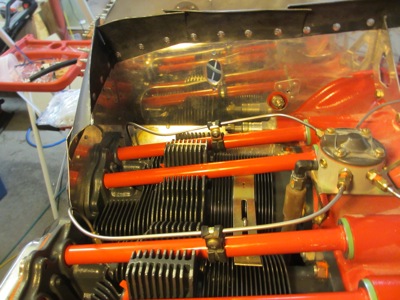Yes, I am still working on the airplane! My excuse for not posting any updates for a while is that I've been ridiculously busy at work, and also I've been jumping back and forth between separate but overlapping firewall forward projects that haven't really lent themselves to turning into a single writeup. So beware that the photos accompanying the next few posts may show multiple separate things happening at once. Don't panic.
Here's the back of the engine, viewed from the starboard side. The cylinder closest to the camera is #3.
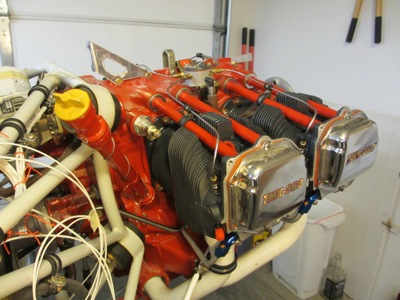
Here's a closeup of the back of cylinder #3, which is the intake side. The issue on the RV's is that the cooling fins here are really shallow, and in fact are partially blocked in places by the design of the cylinder casting. The RV baffles sit hard up against the aft face of the cylinder, which has the effect of choking off a lot of the air that is unable to pass from the top of the cylinder to the bottom through the blocked fin passages.
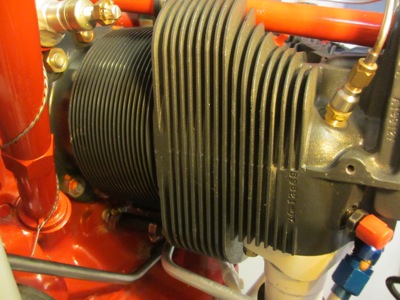
Here's another view with different lighting, in which you can see the problem. The fin area at the center of the photo is very shallow, and the portion of the fins in the lower right (near the intake valve) is blocked entirely:
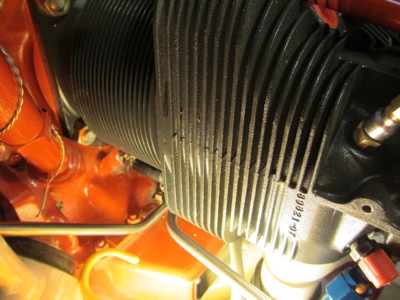
The traditional approach to ensuring adequate airflow through the cooling fins is to add a washer between the baffle and the cylinder, at the screw hole shown on the right side of the previous photo. This probably works, but opens up a gap along the entire back side of the cylinder, which wastes cooling air. A better approach is to form a duct in the baffle to let air "jump over" the blocked fin passages. Since my baffles were already finished and fitted, I chose to address this by riveting some strips of 0.090" scrap aluminum to the inside face of the baffle. This isn't as good as a formed duct, but it was easier to accomplish:
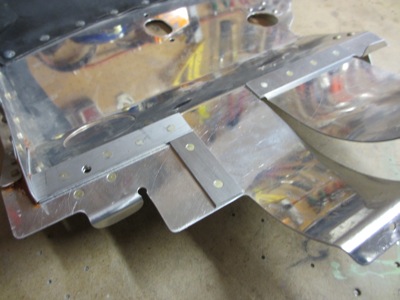
Alternate view showing the spacer strips. The inner portion over the cylinder barrel is blocked off, since the fins there are plenty deep, and the outer portion is blocked off since the fins are either adequately deep or nonexistent.
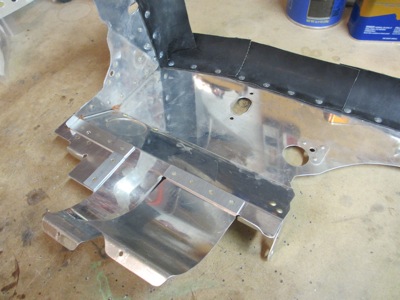
Here's what the channel looks like when the baffles are installed on the engine. Air can go down through the channel formed by the riser strips, but is forced back through the lower cylinder fins by the circular wrap that goes underneath the cylinder. As a result, the air is able to do some useful work cooling the engine, instead of being blocked. To the left and right, the air goes down between the cylinder fins as per normal.
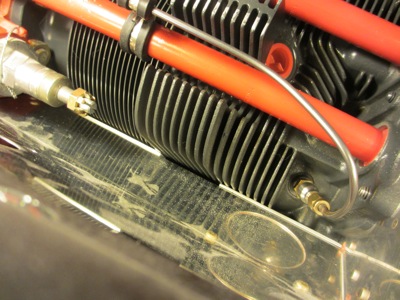
Viewed from underneath, you can see the vertical spacer strip that's necessary to keep the air from squirting outboard instead of staying between the cylinder fins and continuing downward. Although it looks like some of the lower outboard fins are "orphaned", i.e. cut off from cooling air, the design of the cylinder head and stock baffles would have stifled these vestigial fins anyway, so I don't think any cooling capacity is lost by doing it this way.
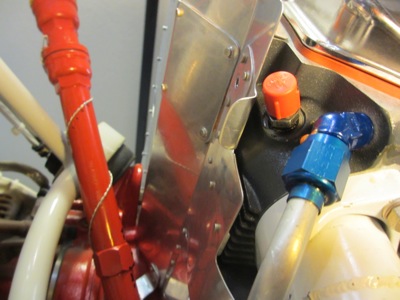
On to the final baffle installation. This was an easy mod to do, once I understood the geometry of the airflow and the nature of the problem to be solved. If it helps prevent cylinder #3 from running too hot, great – otherwise, it should be no big deal to remove these spacers later down the road if I need to address this area again.
